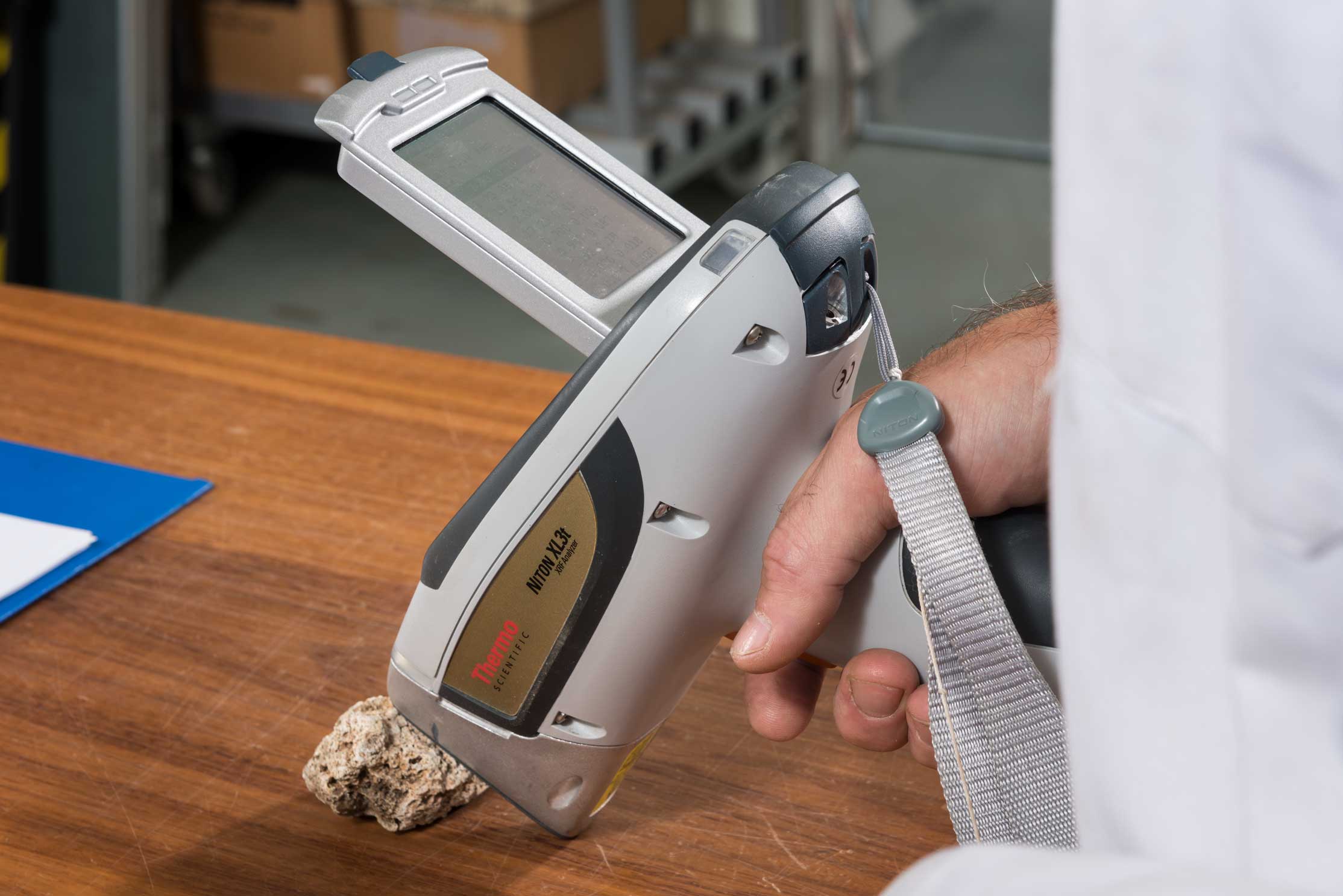Research Theme #Innovate
We are always looking to develop or refine our research methods, tools and science-based approaches. Our research includes developing innovative and smarter technologies, techniques and tools, or finding new applications for those developed elsewhere. This will enable us to do our existing research better, or to do entirely new types of research, and to do so more cost effectively.
We have divided the research in this theme into the following topics:
Materials
From prehistoric earthworks to post-War concrete buildings, the materials used in the past have shaped what we now see as the historic environment. Understanding the character of these materials is an essential part of understanding past societies - how raw materials were selected, what technologies were used to extract, produce or recycle them, and how they were transformed into useable products.
Research will have impact if it underpins understanding and help us better assess, interpret, manage and present our heritage. It may also lead to new marketable technologies or techniques, and will build a richer knowledge of the crafts, industries and manufacturing techniques of past societies.
Research questions that will help our mission include:
- What materials should we be focusing our efforts on as priorities, either as part of investigative research to establish date, origin, function and degree of preservation, or conservation priorities?
- What new methods can be devised to support faster, more cost-effective characterisation of materials and how can we help get them to the market effectively?
- How can we enhance our understanding of production, provenance, and chronology of artefacts and residues encountered in archaeological investigations to help refine the interpretation of remains discovered?
- Can we synthesise from existing reports chronological or spatial changes in different types of material that may reveal technological innovations, patterns of supply, and cultural differences in use, adaptation, discard and recycling?
Find out more about our heritage science research
Human Environment
Without people and an understanding of how they lived, shaped and, in turn, were shaped by their environment, historic places lose most of their meaning and value. Human health, the diseases we suffer from, the food we eat, the places we live in and the way in which our planet is changing are all part of our intimate relationship with the environment, both now and throughout our history. Environmental archaeology uses the natural sciences to investigate these complex interactions. The application of techniques such as proteomics, isotopic analysis, and next generation DNA sequencing is transforming our knowledge of past environments and the people who lived in them.
Research will have impact if it delivers better ways of understanding the past environment. It could increase the value for money and cost-effectiveness of archaeological investigations, providing new narratives of our shared past, and unlocking new resources for agricultural, medical and environmental research.
This in turn will engage and inform people about the use of science in understanding and conserving the historic environment.
Research questions that will help our mission include:
- How can the further study of human skeletal biology from archaeological specimens unlock new insights into past societies, environments and disease?
- What new insights can be developed from an understanding of past animal and plant species represented in the archaeological record?
- What new techniques for identification and recording of past environmental indicators and species can be developed?
Find out more about heritage science research projects and working groups
See research methods for human osteology
See research methods for zooarchaeology
Dating and chronology
When events took place, and the development, from multiple events, of a common chronology is fundamental to our understanding of the past. The application of Bayesian statistical modelling for the interpretation of scientific dates provides timing and tempo, revealing the sequence and pace of change. This allows us to see the connections between past events, compare contemporary sites, and trace the choices people made in building and maintaining their environment. Scientific dating is a key element of our knowledge of the past, and underpins many of today’s decisions about protecting and conserving our historic environment.
Research will have impact if it results in new scientific dating techniques; enhancement of existing scientific dating methods, and synthetic applications of scientific dating that explore the timing and pace of major changes in the past. Through this our knowledge of our archaeological sites and historic buildings will be significantly deepened.
Research questions that will help our mission include:
- What new methods of scientific dating, such as rehydroxylation kinetics for dating fired ceramics, can be developed and brought into reliable and cost-effective use?
- How can we extend the range of sites and structures that can be dated using dendrochronology (tree-ring dating), for example by extending the network of oak reference chronologies?
- What can we do to address the calibration and radiocarbon reservoir issues which affect the accuracy of radiocarbon dating?
- How can we more effectively amass and synthesise key dating data to help our understanding of the past?
Collaborate with us
If you'd like to collaborate with us on this theme please use the contact address below to get in touch.
Research
-
Email
[email protected]
-
Address
EC4R 2YA





